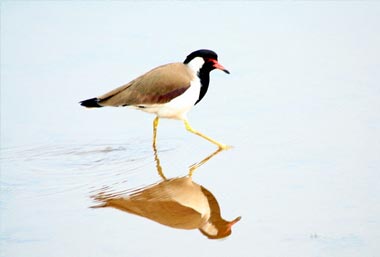Sariska Tiger Reserve and National Park
Though officially known as a tiger sanctuary, Sariska Reserve and National Park has seen few sightings of this predator, thanks to rampant poaching (even though it has, since 1979, been under the care of Project Tiger). But while Sariska doesn’t have the cachet of Ranthambore, the most famed of Rajasthan’s wildlife destinations, there’s plenty of wildlife here to admire, in environs both pleasant and tranquil.
Sariska had three tigers in 2008 (one male and two females) and more have been introduced in subsequent years. This tiger reserve was the first in the world to have successfully relocated tigers – thankfully, the tigers adapted to the conditions without much trouble. Today, there are [16??] of the animals here.
Strikingly green against the red clay of the surrounds, Sariska covers an area of 881sq km, of which 498sq km is the core area.
History
This area was at one time a hunting ground of the Alwar royal family. It was made into a sanctuary in 1958, and in 1979 it became a tiger reserve. Sariska was declared a national park in 1982. There is the 17th century hilltop fort of Kankwari (where Dara Shikoh is rumoured to have been imprisoned by his brother, Emperor Aurangzeb, during the succession struggle) towards the centre the park, as well as a Hanuman temple. Sariska also finds mention in the Mahabharata, as the place where the Pandava brothers spent their exile.
Geography
Set amid the rolling and barren northern range of the Aravalli Hills in a valley of forests (chiefly dry deciduous but also thorn-scrub), Sariska has a topography that’s similar to Ranthambore’s. There are three manmade water bodies in Sariska: Kalighatti, Salopka and Pandupol. The wildlife population here is reliant on these sources of water during the dry season.
Weather
November to April is the best season. During this time, much of the wildlife is best spotted in the mornings and evenings, next to the watering holes.
While strictly the park shuts down for six months of the year, because of the presence of shrines within the reserve, the authorities keep Sariska open throughout the year.
Flora and Fauna
Sariska boasts a fauna that’s varied and plentiful, and is especially known for its sizeable population of rhesus monkeys. Besides this species of primate, there are Hanuman langurs. You’ll also encounter chausingha (the four-horned antelope), chital, sambar, chinkara, nilgai, wild boar, jungle cats, jackals and hyenas. More elusive are leopards, since they usually emerge at night.
Birds are abundant during the rainy season. Among the avifauna that can be spotted in Sariska are peafowl, spurfowl, junglefowl, grey partridge, bush quail, sand grouse, treepies, babblers, bulbuls and the great Indian horned owl.
How to reach
Sariska is 35km southwest of Alwar on the main Alwar-Jaipur road. It can be reached by bus from Alwar – all bus services from Alwar continue on to Jaipur (1hr). Sariska is 194km from Delhi (3hrs via Dharuhera and Alwar) and 107km from Jaipur. From Delhi, you can also take the Jaipur Highway (240km). The nearest railhead and airport to Sariska are, respectively, at Alwar and Jaipur.







 Share Via
Share Via


